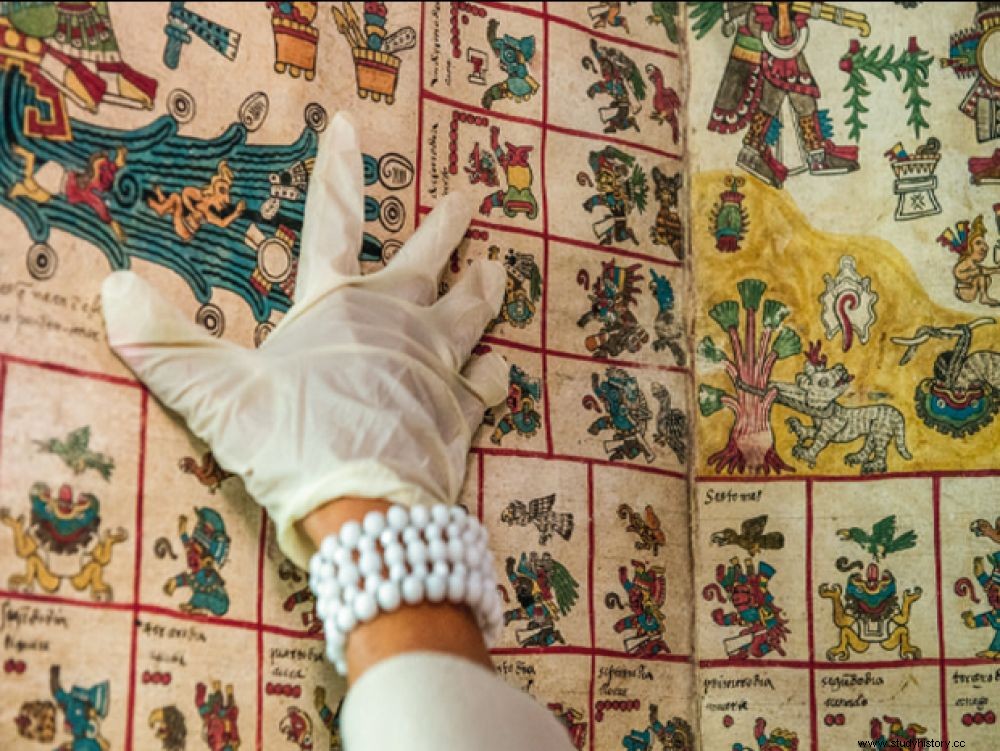Analyzed by French paleographers, the Codex Borbonicus has just revealed the sophisticated techniques that the Aztecs used to obtain sumptuous reds and blues, capable of crossing the centuries.

The chemists determined which organic materials went into the composition of each color in the manuscript. Here, a facsimile.
They are hundreds! Gods, strange creatures, human beings represented within the framework of ritual celebrations... This is the illustrated world of the Codex Borbonicus , a precious Aztec solar and divinatory calendar, made up of 36 sheets of bark. Preserved since 1826 in the library of the Palais-Bourbon, in Paris, it has just revealed the manufacturing secrets of its dazzling colors.
To better characterize the pigments used, Fabien Pottier's team (Conservation Research Center, National Museum of Natural History) used different spectroscopy techniques, a non-invasive process that respects the most fragile pieces. "This involves directing radiation (X, UV, visible or infrared) onto the surface under study and capturing the reflected beam. The characteristics of this beam make it possible to deduce the properties of the materials under study" , explains Fabien Pottier. These data were then compared with dyes extracted from various plants listed in the Florence Codex, veritable encyclopedia of the Aztec world, by the Franciscan Bernardino of Sahagún (XVI th century). Results ? "All the materials used to produce the manuscript were traditionally employed by Mesoamericans before the arrival of the Spaniards" , says Fabien Pottier. Among the best known, the cochineal - an insect, which gives red - and a local indigo tree (Indigofera suffruticosa ), which provides blue.
This article is taken from special issue number 192 of Sciences et Avenir , "9 Great Texts of Humanity Explored by Science". This magazine, dated January/February 2018, is available on newsstands.
"The Codex of Florence evokes how organic dyes were transformed into lakes or hybrid pigments , reports Élodie Dupey Garcia, doctor in the history of religions (National Autonomous University of Mexico). The technology consisted in fixing the organic substances on a metallic or mineral substrate". So, for the Borbonicus, a special clay (palygorskite) was added to the indigo. Heated, the mixture gave the famous Mayan blue. And it is the addition of alum to the extract of cochineal which made it possible to obtain a lacquer. "Thanks to this technique, the color of the paintings has been stabilized over time" , concludes Fabien Pottier. Next step for his team? "Study this stability in order to propose optimal storage conditions for the codex".
By Laureen Bouyssou
